I worked in the Flatiron Building from 2012-2019. I work for St. Martin’s Press, part of Macmillan Publishing. SMP was the first of Macmillan’s imprints to occupy the Flatiron almost 50 years ago, and soon after the rest of the company followed until they occupied the whole building.
When you are first hired, they give you a book about the Flatiron Building. A great book on the building. It’s an amazing story to an iconic NYC building.
I have always been a huge fan of NYC history and the Flatiron is on anyone’s list of the most amazing buildings still standing. I won’t go into its history or the building of it, there are many resources on that subject already, so no need to go there.
The first time I was inside the Flatiron, I was visiting my old boss, who was now working for SMP. They needed some help freelancing, so I was going up to talk to him about it. He worked on the 15th floor, and his office was the point or tip, so I was excited for that. He gave me a few minutes to soak it all in as it is quite the view you can only get from one place.
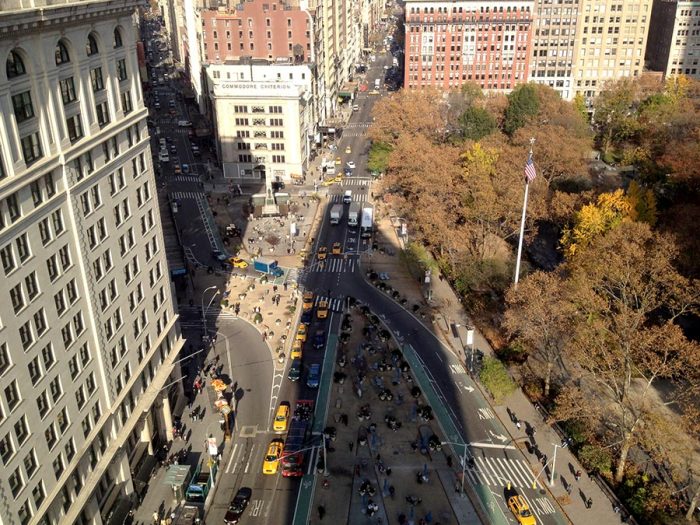
I freelanced at SMP for a while until they decided to bring me on full-time in August of 2012. I was looking forward to it, I had enjoyed the people I had already met, and liked the work I was doing. Now I would be entering the Flatiron everyday. Everyday I will work inside an iconic piece of NYC history.
I would go outside for a walk almost every day, the Flatiron area is amazing, with Madison Square Park, and the plaza space up to 26th Street, you never know what is going on in the area. I would see concerts, film productions, sample giveaways (lots of those). I would never fail to see someone taking a picture of my “office building” as soon as I walked out, never failed, rain or shine, could be a couple or a big group, someone is standing across the street looking up with a camera. I never failed to whisper to myself “that’s right, snap away, I see it every day, and I get to go inside!”, pompous attitude aside, I was proud to walk in there every day. I wore it like a badge of honor that I got travel to and work inside such an amazing building.
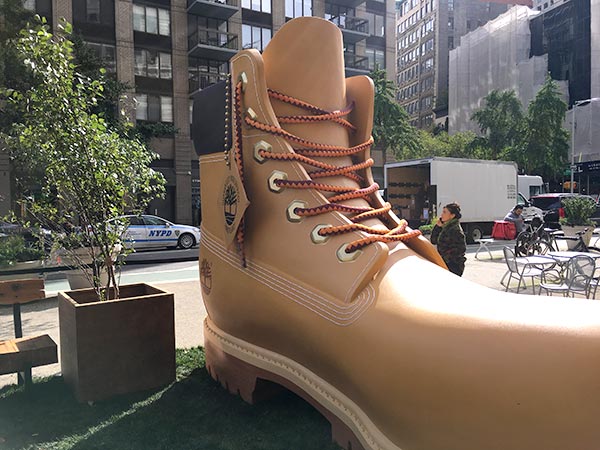
Timberland Boots promotion 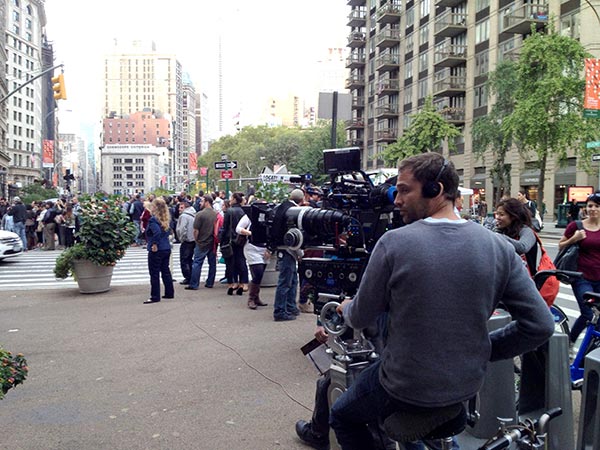
Film shoot on the plaza 
NY Rangers promotion 
Car and model photo shoot 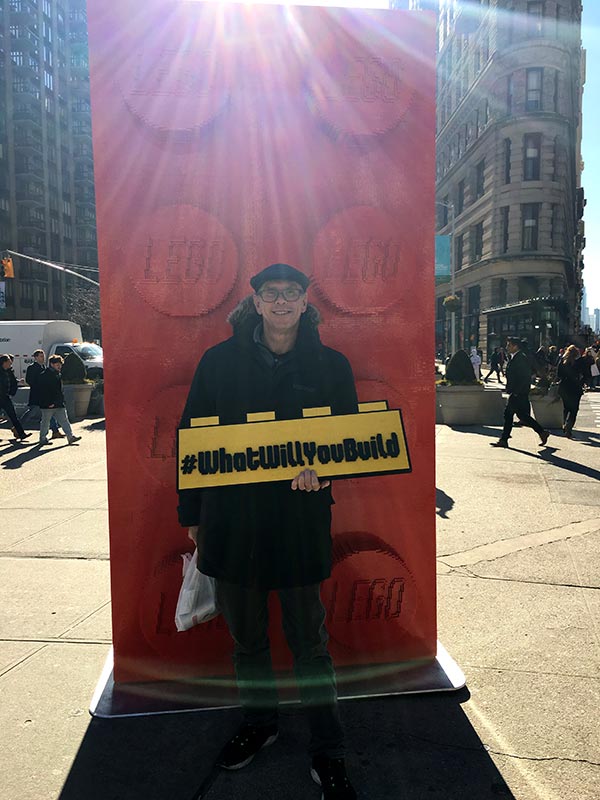
LEGO promotion 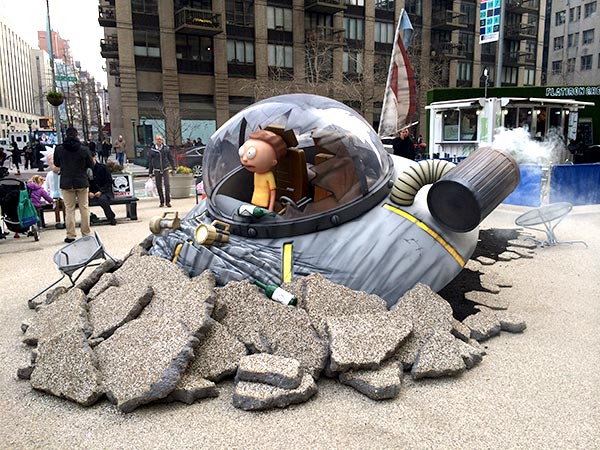
Alien saucer crashes into Flatiron Plaza
It didn’t take long for me to be acquainted with Sunny Atis, who is the building manager, and, thankfully, he is the manager still to this day. We first met talking about the Jets, and sports, as he is a huge Jets fan like myself. We would commiserate, and catch up when we passed in the building. I just want to say, that there could not be a better manager for the building than Sunny. He is a true New Yorker, which is another reason why we connected. His office is in the basement. and the basement there is very old, and there are actually sub-basements below that. He understands the building better than anyone, and not just technically, he knows its history, he has pictures of all the people who have visited, he’s proud of the building and it shows.
The whole time I was there, I would use any opportunity to explore any office, or any floor. My ID worked almost everywhere. A lot of the floors were broken up differently, depending on the configuration needed. You could use the staircase in the back to avoid waiting for an elevator, but you could go up or down one floor and the floor plan would be entirely different. Some people had offices that still showed some of the old building. Even from my two offices, you could see the aged brick-face, I could still see the hardware for awnings that would be installed in spring.
The Flatiron had no internal AC, so every office had a window unit. Well, almost every one, my first office on the 15th floor, on the west side, did not. I was told there was some problem with the window that they couldn’t install it. There was a vent in the ceiling that was supposed to pump in some air but it rarely worked. I can recall many times when workmen would have to ask me to move, so they could get on ladder to try and fix the duct or whatever. I didn’t mind, because I realized the entire building had a drop ceiling, and when these workers removed the tiles, I could peek in and see the original structure of the building. A glimpse into the past.
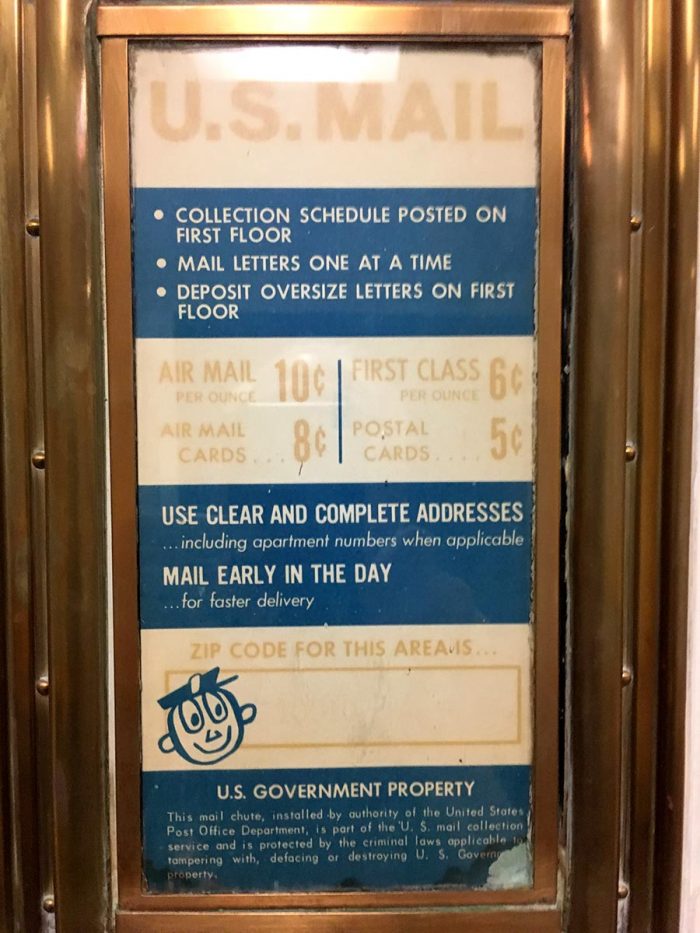
It was actually to my advantage, that the building had resisted major change for so long, there were remnants in certain offices and floors if you knew where to look for them. In the 20th floor conference room, they had one of the original windows as a picture frame on the wall, I think it was copper. That conference room was great. On the 20th floor, one from the top, if offered great views. I remember often sitting there and just looking out, even at the clock tower of the Metropolitan Life Insurance building, and just staring at it, thinking, where else could you see it from this angle? (well now by drone if you can get a permit).
Everywhere I went in the building I would be looking around, at the ceiling, the shape of the room, where it was in the building. There was a small door in the area outside the elevators on my floor, and it was left ajar one day and I peeked down, I had to shine my phone light in to see, but it was a big chute that it looked like it ran the length of the building with cables and wires running down. It was old and dirty and dark, but it was cool, because it was virtually untouched by time.
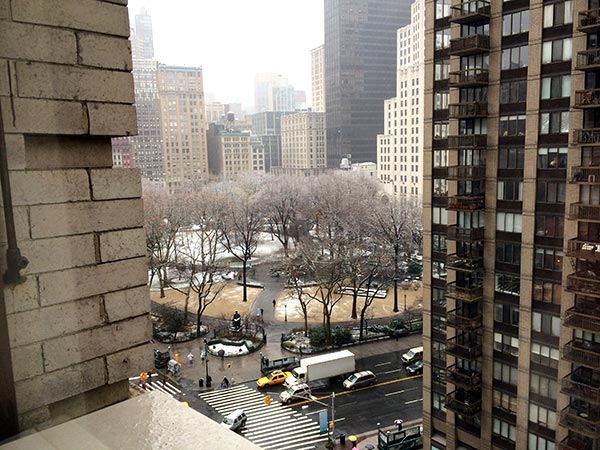
I would often look out the window towards Madison Square Park, and wonder who else sat in this space and what did they see, with all the history of the city coming up or down Broadway, the parades including the Victory Arch, the protests, a famous fire, just the human interaction, the park itself going through various stages of disrepair and neglect, all the way to it’s present beauty.
I never took for granted that I worked in an iconic building. For a long time I was convinced there was a time portal somewhere in the building, I mean if there were going to be a time portal in NYC, what better place to put it. The building has an undeniable energy about it, I had a spiritual connection to it during my time there, and I still do.
in 2017 I had heard rumblings that our lease would be up in a couple of years and we would most likely be moving out of the Flatiron. I knew I was on the clock, and there were two areas I had yet to explore, the full basement and the roof. I asked Sunny if he could accommodate and he said yes, he mentioned there were a couple of other people who wanted to check it out before we left, so it would be a small tour group. Sunny let me know when the tour would be, and I went back and read through the Flatiron book a bit to refresh myself. We would be doing both the roof and the basement among other things.
We met in the lobby, and we took the elevator to the top floor we could, which was 20, there are 21, but you have to walk a small set of stairs to get to the 21st. Once on the top floor, it’s weirdly arranged with a small office, with a lot of great Flatiron memorabilia in it. Sunny leads us through a doorway and out onto the roof. It’s a beautiful day, he guides us through a narrow passage and up to the point, where there is more space. I’m fascinated the whole time, and while I’m very scared of heights, the railings were way too high to cause any alarm. I took a bunch of pictures, and had my picture taken of course.

Me on the roof at the point 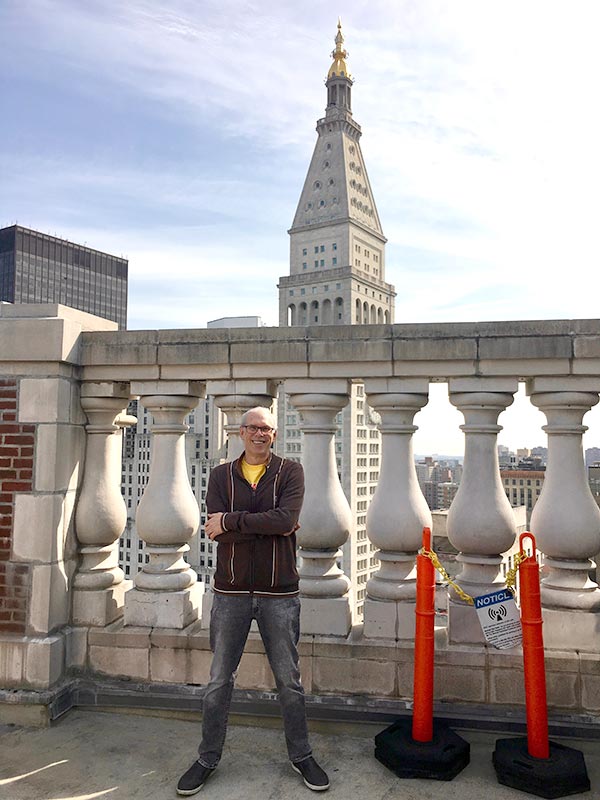
Standing on the east side, Metropolitan Life tower in background. 
On the west side, NJ in far background. 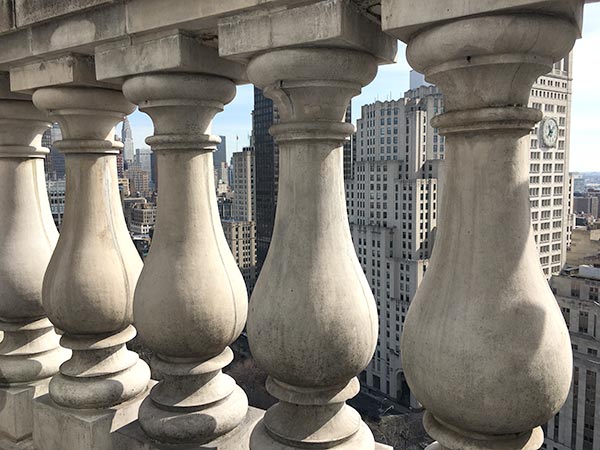
Looking through at east side, Chrysler Building in background. 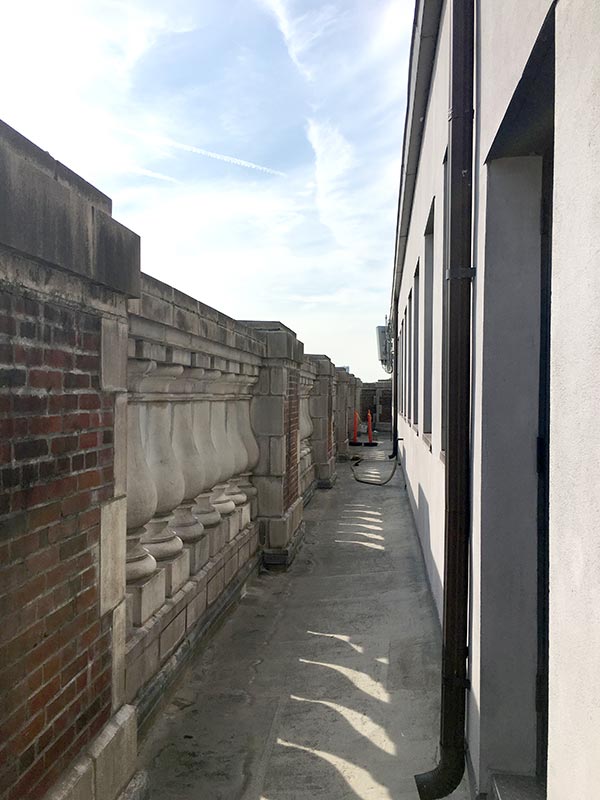
Narrow walkway on the sides of the roof. 
The back staircase that runs the entire building.
Then back down to the lobby, and Sunny walks us down to the basement, explaining how people would access the restaurant in the basement. That’s right, there was a restaurant in the basement, it was called ”Louie’s”. It seated almost 1000 people, and it had another entrance that you could access directly from the street, and not through the lobby, but that entrance was no longer there. Walking down the staircase you can see the marble on the wall and a nicely tiled hallway, although its just an access to the basement now, you can see the original intent of the space. There’s even a sketch of what the restaurant looked like, and standing from Sunny’s office, you can recreate the photograph looking out at the basement space, and imagine it. Even in the hallway outside, through a door, in what is now a janitorial store room, there was once the men’s bathroom for the restaurant. In the pictures you can see the separations for urinals, molding and other clues to its original use.
Inside Sunny’s office, the walls are filled with pictures of famous people visiting the Flatiron, from sports stars to movie stars, politicians, you name it. More impressive to me was his collection of items that he has collected over the years. He has pieces of the original façade, before it was redone, pieces of the old hydraulic elevators, pieces of original window frames and weights, just a great collection, that is still growing, with the current restoration of the Flatiron uncovering even more.
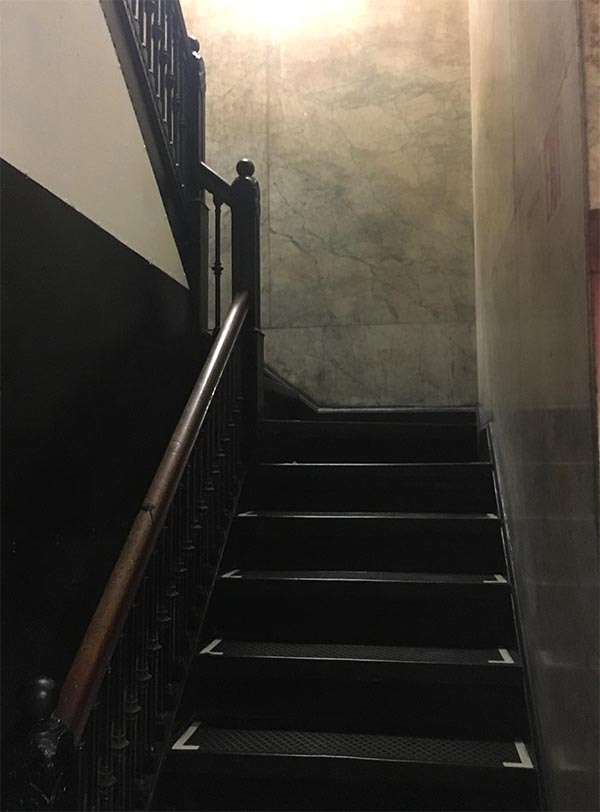
Stairs from the lobby down to basement/restaurant. 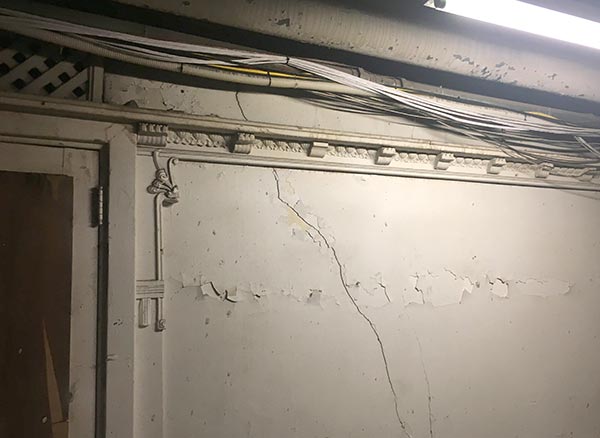
Original molding from restaurant in basement. 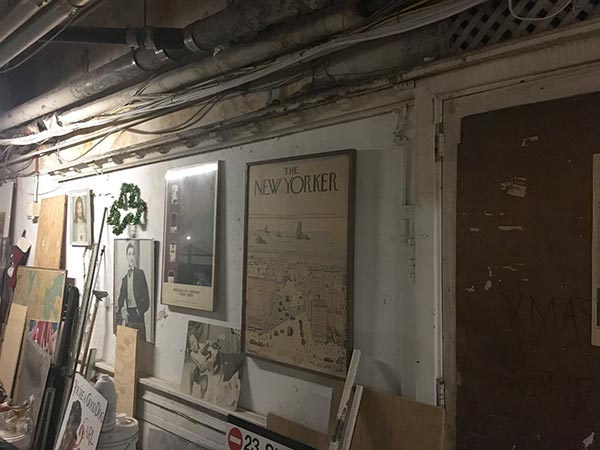
More molding, various objects Sunny has collected outside his office. 
Piece of the old revolving door that led from the street straight down to the restaurant. 
Various pieces of the original building. 
The basement itself, first level. Restaurant was here. You can see the columns here in the old drawing, the next image. 
Louie’s Restaurant. taken from the book “The Flatiron” by Alice Sparberg Alexiou. 
The old hydraulic tanks. 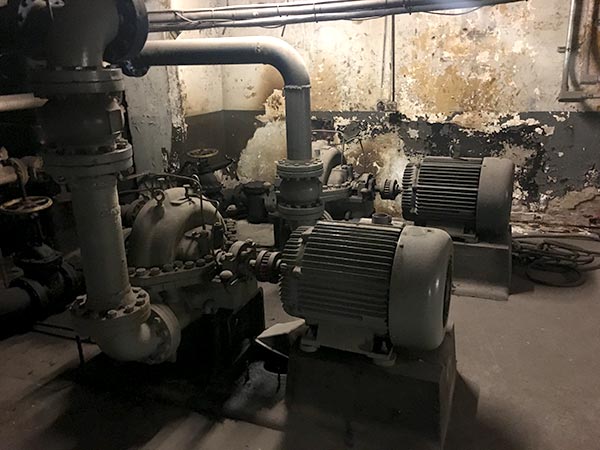
Basement machinery. 
Marble instrument panel that was used to control hydraulics for elevators. 
A look at the street subway grates from the lower basement. 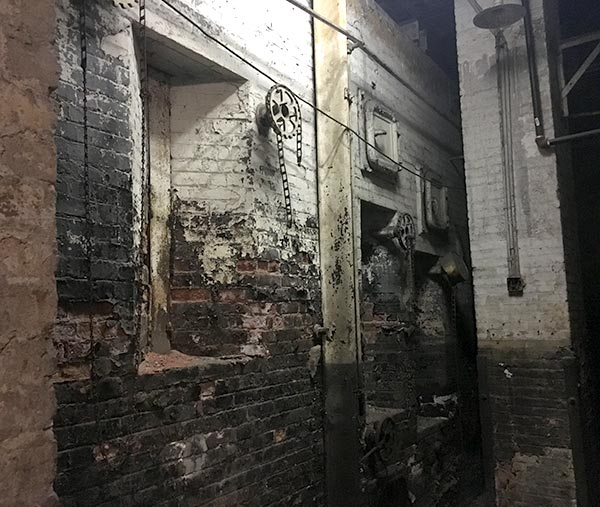
Coal chute that went all the way up to the street where coal was delivered from. 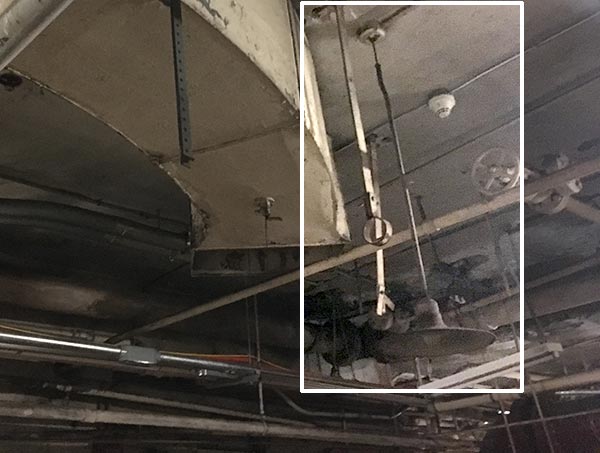
The ceiling in the basement housed many old items, if you looked for them. 
Old electrical set up in basement. 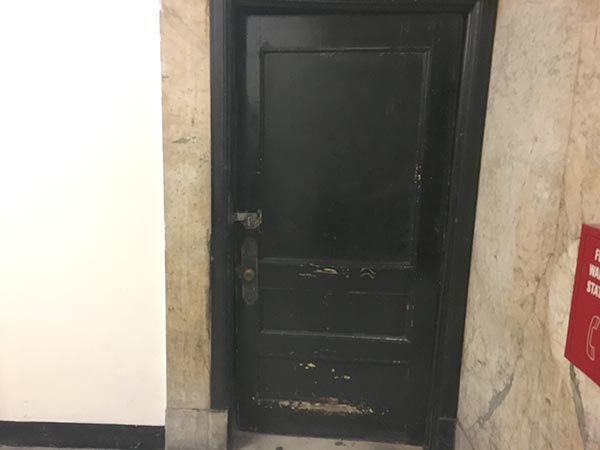
Door to restaurant bathroom, now a janitor’s closet. 
Remnants from the bathroom for the restaurant. 
The urinal separators in the old restaurant bathroom. 
The window in the old bathroom, always underground, where did it go to? 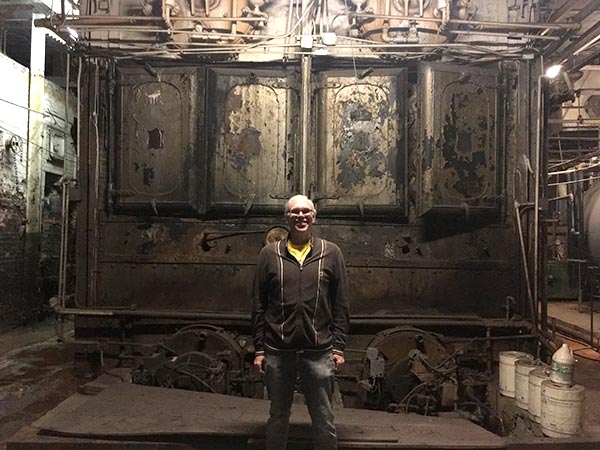
Standing in front of original coal boilers.
This was only one level of the basement as we learned, there was more to explore below. This is where it got really interesting, he took us down a corridor, past some huge tanks, leftover from the hydraulic system and into this huge sub-basement. It was overwhelming. I was looking up about twenty feet. Sunny explained that the Subway was actually running on the other side of one of the walls. The basement has been barely touched by time. Everywhere I looked I could find odd little things that had to have been there for over 100 years. It was awesome. Sunny explained a few things, like a door which used to be a coal chute, that would be loaded from the street and sent straight down to where we were, and if you see the size of the boilers which I’m standing in front of, you can understand they probably used a good deal of coal. He led us to a small door and opened it, and it was just pitch black, I mean void of anything. He instructed us to stick our head in and look up, and when you did you saw two small rectangles of light. He explained those were the subway grates up on the street. He showed us the panel that held the instruments and dials for controlling the hydraulic elevators. It was a walk through time. Eventually we made our way back up and I was awestruck. I’m so glad I just kept taking pictures, because it was too much to take in all at once.
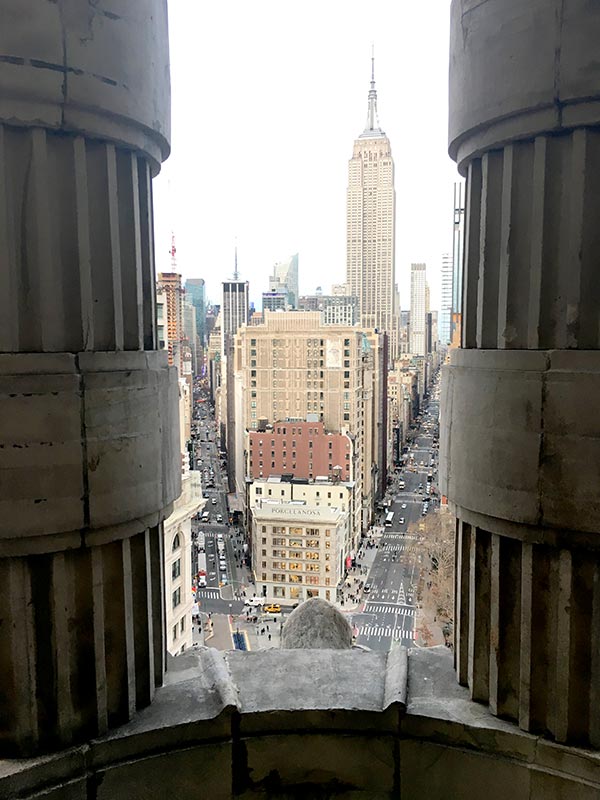
The view from the 20th floor point balcony, with columns in view. 
The window in the CEO’s office you could see the original window shape and design. 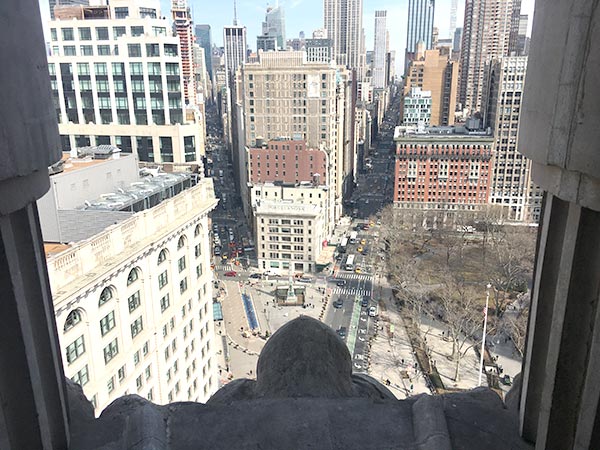
View from 20th floor balcony, up to front.
The other cool thing we were allowed to do was to go out on the balcony on the 20th floor, on the point, which was located in John Sargent’s office, he was Macmillan’s CEO at the time. The company sent out an email that anyone was invited to come into his office and go out and check out the balcony. You could even bring a friend or family member. I’m pretty sure John got sick of seeing me as I took full advantage. I brought up friends, relatives, and every time he was warm and cordial, even if he was in a meeting with someone else. You could really get a great view from there, it was a special place, a small balcony, with two columns and a small ledge. You felt like the king of the world up there, looking out up 5th Ave. and Broadway at the same time, knowing this vantage point was one few could experience.
I’ll never forget my time in the Flatiron, and always treasure the memories. I’m hoping that Sunny can give me a little updated tour once the building is finished with its present restoration and it moves forward. I’m not worried as I know it is in good hands.